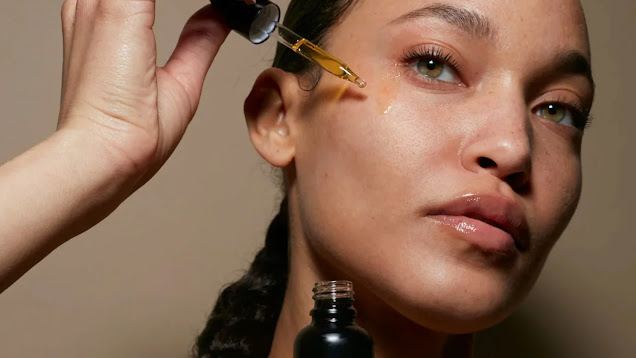
How to clean your pores thoroughly?
There was a time in our lives when we were obsessed with our pores. It was amazing how quickly they clogged, and if we dared to look at them with a magnifying glass, we would find that we missed an hour or two.
The problem is that our pores face a variety of problems every day. Even when you go out, your pores are exposed to pollution and dirt, not to mention fighting sweat or makeup, all of which can cause pores to become clogged. So here comes the question: how can you clean your pores thoroughly?
How to clean deep pores?
To clean deep pores, you need to take several steps. If you follow these steps, you will find that your skin is clearer and clogged pores are easier to manage. Remove makeup before going to bed. It is very important to keep your skin makeup-free before going to bed at night.
Sleeping with makeup on will not only increase signs of premature aging such as fine lines and wrinkles. Leftover foundation and other products can also clog your pores, causing acne and blackheads. Use cleansing products and
face washes to remove all makeup and thoroughly clean your skin without drying it out.
Exfoliate your skin. Exfoliation removes layers of dead skin cells that can sometimes build up on the surface of your skin and clog your pores. Use an exfoliator or chemical peel 2-3 times a week to thoroughly cleanse your skin and
open your pores without stripping your skin of its natural oils.
Use a clay mask. Clay masks are great for cleansing your pores. You can remove oil, dirt, and dead skin from deep inside your pores. Use a clay mask once or twice a week to unclog and shrink your pores. Be careful not to over-irritate your skin and avoid exfoliating on the same day you use a clay mask.
Drink enough.
Keeping your skin moisturized and drinking enough water throughout the day not only helps your internal organs, but it can also improve the appearance of your skin and remove toxins from your pores.
There you’ll find some tips on how to unclog your pores. If you follow a good skin care routine, you’ll notice that your pores are less clogged, and over time, your skin’s texture and overall appearance will become smoother and less prone to breakouts.
What do clogged pores look like?
Pores are tiny openings that also contain hair follicles that cover the entire skin and allow oil (also known as sebum) to reach the surface of the skin. Even though pores are enlarged due to stretching, they are not visible to the naked eye. They only become clogged, and this can happen in a variety of ways.
Blackheads – Blackheads form when oil and dead skin cells clog the pores, causing them to open and debris on the surface of the pores to oxidize and turn black.
Whiteheads – These cause pores to become clogged with bacteria and white, purulent material can clog the pores. Papules – commonly called pimples – are cysts beneath the surface of the skin that appear inflamed, swollen and have whiteheads. Cysts – Cystic acne can become very severe and cause underground lumps that cannot be pulled or squeezed to appear anywhere on the skin.
If you want to learn more about pores and blackheads, we have a blog post on how to remove blackheads on our website.
What products clog pores?
There are many products that are great for opening clogged pores, from professional vacuum cleaners to tools to a baked good in your kitchen cupboard: baking soda.
Yes, great for both cake and pore cleaning! Baking soda deep cleanses pores while gently exfoliating, relieving skin congestion and revealing a healthy, radiant complexion. Simply mix two teaspoons of baking soda with one teaspoon of
water to make a paste and apply all over your skin. Let dry for 10 minutes and then rinse with warm water.
Your skin is free of dead skin cell buildup and bacteria in your pores. Keep in mind that baking soda can be slightly irritating to sensitive skin. So if you’re unsure, do a patch test before applying it to your
all over your skin.
Professional extraction. This will be the best alternative to squeezing blackheads at home. With professional extractions, you can open clogged pores without causing permanent damage, such as hyperpigmentation, scarring, and inflamed breakouts.
Exfoliate with an AHA or BHA. Chemical peels remove dirt, product residue, and dead skin cells that sit on the surface of your skin and can clog your pores. Learn more about these acids and how they affect your skin
Check out our full guide to AHAs and BHAs on our blog.
Use pore strips. Pore strips have been around for years, and while methods for cleansing your skin have become gentler, many people find using pore strips to be the most effective way to deep cleanse your skin. If you
If you already use pore strips and have no concerns about their use, then by all means continue to use them. When doing this, make sure you have thoroughly cleansed and prepped your skin and follow the instructions on the packaging.
Will clogged pores go away on their own?
Of course, clogged pores will eventually clear on their own, but it takes time and you may find that your skin still has clogged pores, whether it be blackheads, whiteheads, acne, or other acne. The best way
Keeping your skin clean is a good skincare routine that helps open up your pores.
How to get rid of clogged pores overnight?
Follow these steps to get rid of clogged pores overnight: Face cleansing – Remove makeup thoroughly and double cleanse with a face wash to keep your skin clean but not oily or watery.
Skin exfoliation – Physical or chemical exfoliation removes all the factors that may cause clogged pores, such as dead skin cells and dirt. Use a clay mask. This absorbs excess oil and removes impurities that clog pores.
Apply tretinoin.
If you use retinol in your daily routine, apply it to your skin, focusing on problem areas to open up your pores. The combination of these tips really helps to combat clogged pores and blemishes that you want to get rid of fast! However, if your pores are particularly stubborn, special extracts used by trained skin therapists are the best solution. You have a variety of options to thoroughly clean your pores. You can use the tips or methods mentioned in the blog to combat annoying pores. You also need to consider your ethnicity, skin type, and genetics when considering how your pores look and how easy it is to treat. If you take the time to think about it, there is nothing stopping you and your pores will be clear in no time.


